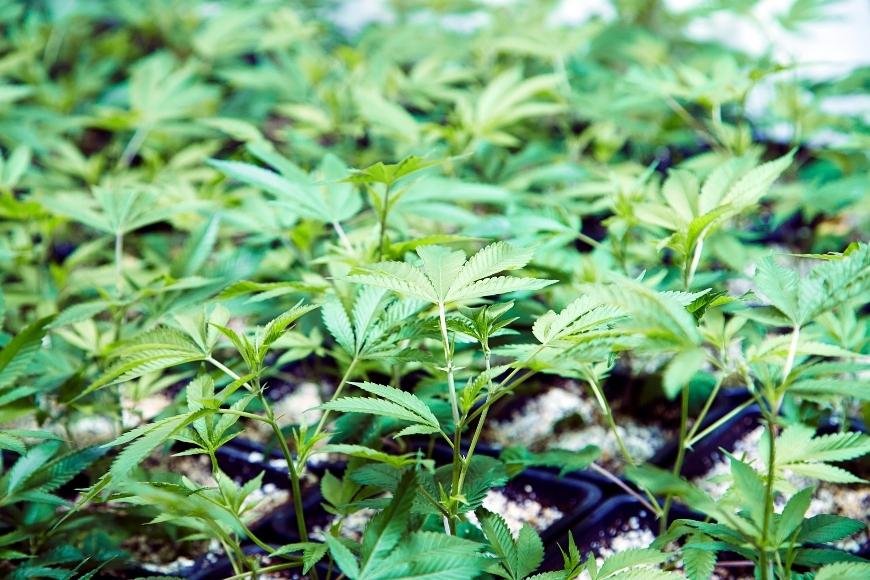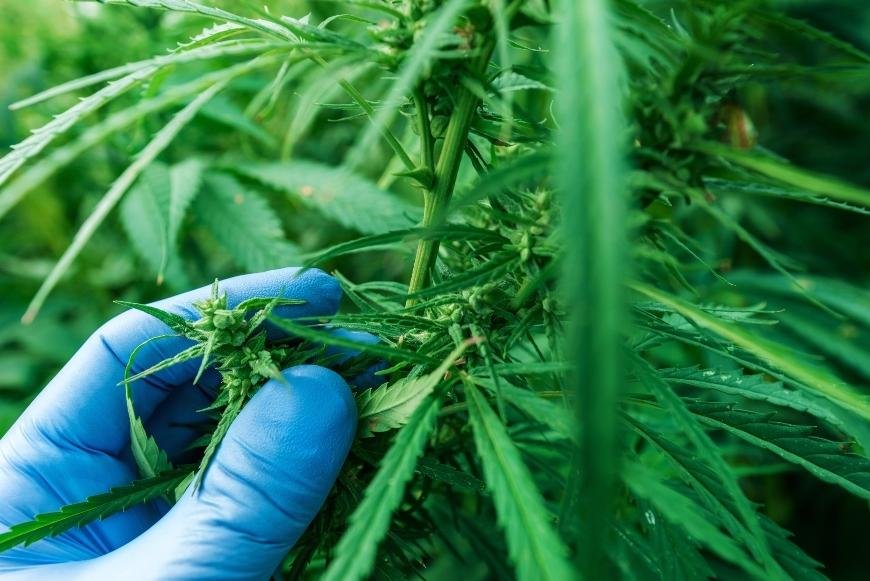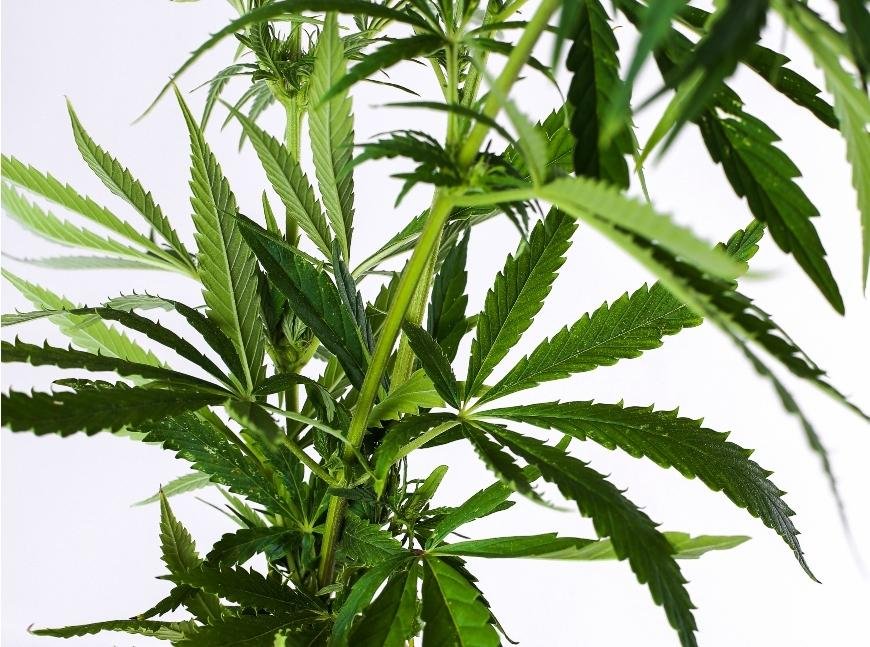Growing From a Mother Cannabis Plant
Discover the secrets of growing from a mother cannabis plant, including choosing the right genetics, maintaining plant health, and cloning tips for success.

Growing from a mother cannabis plant is an efficient and effective method for producing high-quality, consistent crops. By utilizing the genetic advantages of a healthy mother plant, cultivators can ensure their harvests are both potent and uniform in nature. In this comprehensive guide, we will delve into the intricacies of growing from a cannabis mother plant.
We'll begin by exploring what exactly constitutes a mother cannabis plant and its various types, as well as the benefits that come with using one. Next, we will investigate the selection of a suitable mother cannabis plant considering its genetics, vigor, and pest-resistance.
Furthermore, you'll learn about maintaining your chosen mother plants through proper lighting and nutrient management while monitoring temperature and humidity levels within your grow environment. Additionally, we will cover essential pruning techniques to promote optimal growth and overall health.
Finally, our guide concludes with invaluable tips for taking cuttings from your established cannabis mother plants – selecting ideal stems for cloning purposes before preparing them for successful rooting in either soil or hydroponic systems – all while keeping everything clean and sterile throughout the process.
Table of Contents:
- What is a Mother Cannabis Plant?
- Benefits of Using a Mother Plant
- Different Types of Mother Plants
- How to Choose the Right Mother Plant
- How to Maintain Your Mother Plant
- Taking Cuttings from Your Mother Plant
- Tips for Successful Cloning from Your Mother Plant
- Frequently Asked Questions Growing From a Mother Cannabis Plant
- Conclusion
What is a Mother Cannabis Plant?
In the world of cannabis cultivation, a mother plant plays an essential role in ensuring consistent genetics and maintaining a steady supply of healthy clones. But what exactly is a mother cannabis plant, and why should you consider using one? In this article, we'll delve into the concept of mother plants, their advantages, and various types to aid you in comprehending their significance for your cultivation process.
A mother cannabis plant is essentially a "donor" plant that remains in its vegetative state for an extended period to provide cuttings for cloning purposes. These cuttings are then used to propagate new plants with identical genetic makeup as the original donor or mother plant. By keeping the mother plant alive and healthy throughout multiple harvest cycles, growers can ensure they always have access to high-quality clones without relying on seeds or purchasing them from external sources.
Benefits of Using a Mother Plant
- Genetic Consistency: Clones taken from a single mother will share identical genetics which means they'll exhibit similar growth patterns, potency levels (cannabinoid profiles) ,and resistance to pests/diseases.
- Saves Time & Money: Once established, taking cuttings from your own mother plants saves time spent germinating seeds or buying expensive clones online or at dispensaries.
- Better Control Over Phenotypes: When starting with seeds instead of clones derived from selected mothers (with desirable traits), there's less control over how each individual seedling will develop due to natural variations between phenotypes within strains.
Different Types of Mother Plants
While the term "mother plant" generally refers to a single cannabis plant used for cloning, there are different types based on their purpose and cultivation method:
- Main Mother Plant: This is the primary donor plant that provides cuttings for your entire grow operation.
- Bonsai Mothers: These are smaller mother plants, often kept in small containers or trained with techniques like low-stress training (LST) to limit their size while still providing healthy clones. Bonsai mothers can be ideal for growers with limited space or those who want multiple strains available without dedicating too much room to each individual mother.
- Hydroponic Mothers: Some growers prefer using hydroponic systems (soilless cultivation methods) when maintaining their mother plants as it allows precise control over nutrient levels and pH values, which can lead to healthier growth and increased cutting success rates.
Selecting the ideal mother cannabis plant is of paramount importance for any cultivator seeking to cultivate a top-notch harvest. Before beginning, it is essential to have an understanding of the criteria for selecting a suitable mother cannabis plant.
How to Choose the Right Mother Plant
When selecting a mother plant, there are certain elements to bear in mind.
Consider Genetics
The genetics of your potential mother plant play a significant role in determining its growth characteristics and potency. To ensure that you're growing high-quality cannabis with desirable traits, select a strain known for its stability and favorable attributes such as yield, flavor profile, or resistance to pests and diseases.
Look for Healthy Plants
A healthy mother plant is essential for producing strong and vigorous clones. When choosing a candidate, look out for plants with:
- Lush green foliage free from yellowing or wilting leaves.
- Firm stems without any signs of weakness or damage.
- No visible signs of pest infestations or disease symptoms like mold spots or leaf curling.
- A well-developed root system that can support continuous vegetative growth (ideally already grown in either soil or hydroponics).
Check for Pests and Diseases
Pests and diseases can severely impact both your mother plant's health as well as her ability to produce viable cuttings consistently over time. Inspect potential candidates closely before making them into mothers by looking at their leaves under magnification. To ensure your main grow space remains free of pathogens, it's wise to quarantine any new plants for a few weeks prior to introducing them.
Choosing the right mother plant is essential for successful cannabis cultivation. With careful consideration of genetics, health and potential pests or diseases, you can ensure that your plants will thrive. Now let's look at how to maintain a healthy mother plant once it has been selected.

How to Maintain Your Mother Plant
Maintaining a healthy mother plant is essential for producing high-quality clones and ensuring consistent growth throughout your cannabis cultivation journey. By providing adequate lighting, nutrients, and environmental conditions, you can keep your mother plant thriving and ready to provide cuttings whenever needed.
Provide Adequate Lighting and Nutrients
Your mother plant requires sufficient light exposure to support its continuous vegetative state. Utilize grow lights that offer the right spectrum of light for optimal growth, such as LED or T5 fluorescent lights. Ensure that the lights are placed at an appropriate distance from the plant canopy to prevent burning or stunted growth.
- LED Lights: These energy-efficient options have adjustable spectrums suitable for both vegetative and flowering stages of cannabis plants.
- T5 Fluorescent Lights: They emit less heat than other grow lights making them ideal for maintaining a stable temperature in your growing environment.
In addition to proper lighting, supplying your mother plant with essential nutrients will promote robust health and vigor. Use a well-balanced nutrient solution specifically designed for the vegetative stage of cannabis plants - look out for products containing nitrogen (N), phosphorus (P), potassium (K), calcium (Ca), magnesium (Mg) among others micronutrients required by plants during this phase of their life cycle.
Monitor Temperature and Humidity Levels
To maintain a healthy mother plant, it's crucial to regulate temperature and humidity levels within its growing environment consistently. Maintaining the proper temperature and humidity range of 70-85°F (21-29°C) with 40-60% relative humidity is essential for a healthy mother plant. Utilize a hygrometer to observe these conditions and adjust them as necessary by utilizing heaters, air conditioners or humidifiers.
Prune Regularly to Promote Growth and Health
Regular pruning is essential for maintaining your mother plant's overall health and encouraging new growth from which you can take cuttings. Focus on removing dead leaves, damaged stems, or any other parts of the plant that may be hindering its growth potential.
- Topping: This technique involves cutting off the top part of the main stem to encourage lateral branching and bushier growth.
- Lollipopping: Remove lower branches and foliage that receive little light exposure; this helps direct energy towards more productive areas of the plant.
Maintaining your mother cannabis plant requires attention to detail but will reward you with consistent high-quality clones for future cultivation endeavors. By providing adequate lighting, nutrients, temperature control, humidity regulation, and regular pruning practices - you'll have a thriving mother plant ready to supply healthy cuttings whenever needed.
Preserving the mother plant necessitates considerable effort and care, yet it can be achieved through correct practices. Taking cuttings from your mother plant is the next step in ensuring that you have healthy clones for future growth.
Taking Cuttings from Your Mother Plant
Taking cuttings, also known as cloning, is an essential part of maintaining a healthy mother plant and ensuring consistent genetics in your cannabis plants. In this section, we will examine the steps for selecting suitable stems to clone, preparing cuttings for rooting and establishing them in either soil or hydroponics.
Selecting the Right Stems for Cloning
When choosing which stems to take cuttings from your mother plant, there are several factors to consider:
- Age: Look for new growth that is at least two weeks old but not more than four weeks old. This ensures that the cutting has enough maturity to root successfully while still being young enough to adapt easily.
- Size: Choose stems with multiple nodes (the points where leaves grow) as they have a higher chance of developing roots quickly.
- Vigor: Select strong and healthy-looking branches without any signs of pests or diseases.
Preparing the Cuttings for Rooting
To prepare your chosen stem cuttings for successful rooting, follow these steps:
- Cut each stem at a 45-degree angle just below a node using clean and sharp scissors or pruning shears.
- Gently remove any large fan leaves from the lower half of each cutting so that only small leaves remain near its top end.
- Dip each freshly-cut end into a quality rooting hormone gel , making sure it's fully coated before proceeding.
- Place the cuttings into a moistened growing medium, such as rockwool cubes or peat pellets. Ensure that at least one node is submerged in the medium to promote root growth.
Establishing the Cuttings in Soil or Hydroponics
Once your cuttings have been prepared and placed in their growing medium, it's time to establish them either in soil or hydroponic systems:
- Soil: Transplant rooted cuttings into pots filled with well-draining soil mix designed for cannabis plants. Water them thoroughly after transplanting and keep an eye on moisture levels until they become established.
- Hydroponics: Transfer rooted cuttings directly into your hydroponic system , ensuring that roots are fully submerged in nutrient solution while still allowing some access to oxygen. Monitor pH levels closely during this stage of growth, aiming for a range between 5.5 and 6.5.
Taking cuttings from your mother plant can be a great way to expand your cannabis garden without having to purchase new seeds or plants. With the right preparation and monitoring, you will have success in cloning from your mother plant - so let's look at some tips for successful cloning.

Tips for Successful Cloning from Your Mother Plant
In this section, we will share some essential tips to help you achieve successful cloning from your mother cannabis plant. By following these guidelines, you can ensure a constant supply of healthy and genetically consistent clones.
Keep Everything Clean and Sterile
Maintaining cleanliness is crucial when working with mother plants and their cuttings. Make sure to sanitize all tools, containers, and surfaces before starting the cloning process. This helps prevent contamination by pests or diseases that could harm your plants' growth and development.
Monitor pH Levels in Hydroponic Systems
If you're using hydroponics for growing cannabis clones, it's essential to monitor the pH levels regularly as they play a significant role in nutrient absorption by the roots. The ideal pH range for cannabis grown hydroponically is between 5.5-6.5; any deviation outside of this range may lead to nutrient deficiencies or toxicities affecting plant health.
Use Root Stimulants When Necessary
To encourage faster root development in your cuttings taken from the mother plant, consider using root stimulants such as rooting hormones or beneficial microbes like mycorrhizae. These products can help increase the success rate of cloning and promote healthier root systems in your new plants.
By taking heed of the advice given and being meticulous in your dealings with mother plants, you can be sure to raise prime cannabis clones that will do well in their new home.
Frequently Asked Questions Growing From a Mother Cannabis Plant
How long is a mother cannabis plant good for?
A mother cannabis plant can be maintained for several years if properly cared for. The key to longevity is providing the right environment, nutrients, and regular pruning. However, it's essential to monitor the health of your mother plant closely as older plants may become less vigorous or susceptible to pests and diseases.
How long does it take to grow a cannabis mother plant?
Growing a cannabis mother plant typically takes around 4-6 weeks from seedling or clone stage until it's ready for cloning. This time frame allows the plant to develop strong roots and branches while reaching an appropriate size for taking cuttings. Regular maintenance during this period ensures healthy growth and future success in cloning.
How many clones can I get from a cannabis mother plant?
The number of clones you can obtain from a single cannabis mother plant depends on its size, health, and how well it has been maintained. A well-cared-for matured mother could produce anywhere between 50-100 clones per cycle; however, this number may vary depending on factors such as genetics and growing conditions.
How long can I keep a mother plant in veg?
You can keep a cannabis mother plant in the vegetative state indefinitely by maintaining proper lighting schedules (18 hours light/6 hours dark) along with adequate nutrients, temperature control, humidity management, and pruning practices. Continuous care will ensure that your mom remains healthy while producing high-quality cuttings over time.
Conclusion
With the right attention to detail, you can create healthy clones that will produce high-quality plants. Remember: choose carefully when selecting your mother plant, maintain it properly with regular care and pruning, take cuttings correctly for successful cloning, and you'll soon have plenty of great buds.




















































































































